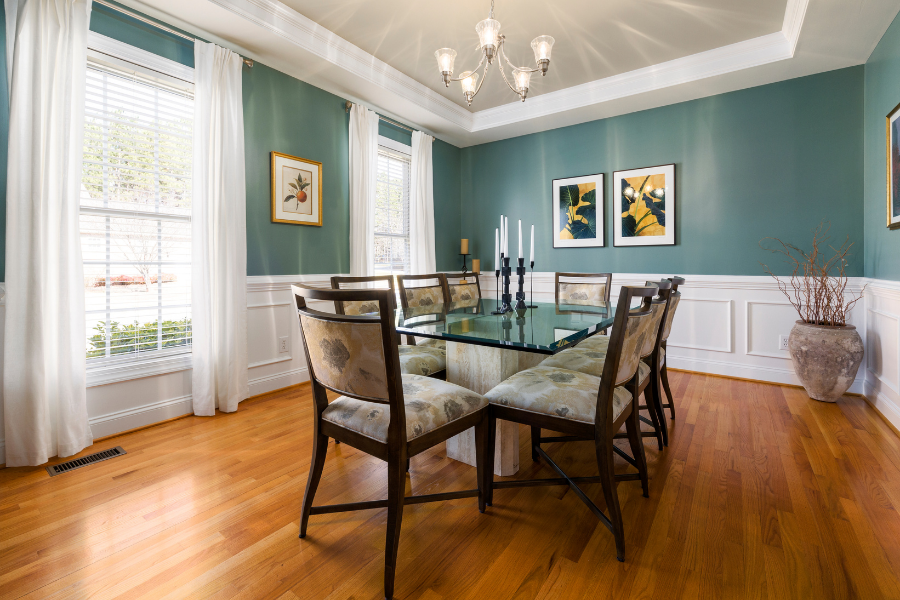Painting a room can dramatically transform the look and feel of your home, but the key to a smooth, professional-looking finish starts long before the first brushstroke. Prepping your walls properly—especially patching any damage—is one of the most important steps in the entire painting process.
Skipping this stage can leave your walls looking uneven, bumpy, or poorly finished, no matter how expensive your paint or tools are.
Whether you’re tackling a quick refresh or preparing a room for a completely new color scheme, here’s how to get your walls in perfect shape before you start painting.

Step 1: Clear and Clean the Surface
Before you begin patching or sanding, make sure your walls are clean and free of dust, dirt, or oils. Remove furniture or cover it with drop cloths, then do the following:
- Use a vacuum with a brush attachment to remove dust from baseboards and corners.
- Wash walls with a mild soap and water solution to remove any grime or greasy spots, especially in kitchens and bathrooms.
- Allow walls to dry completely before moving on to the next step.
Step 2: Inspect for Damage
Carefully inspect the entire wall surface, paying close attention to:
- Nail holes
- Dents or gouges
- Cracks along corners or near doors and windows
- Flaking or peeling paint
- Nail pops (raised bumps where drywall nails have come loose)
Mark any areas that need repair with a piece of painter’s tape or pencil.
Step 3: Patch Holes and Cracks
Now it’s time to repair the imperfections. Use the right materials for the type of damage:
- Small holes and nail pops: Fill with lightweight spackling compound using a putty knife. Press it in firmly and smooth it flat.
- Larger holes: Use a wall repair patch or mesh tape before applying joint compound.
- Hairline cracks: Apply a thin layer of spackle, feathering the edges out so it blends seamlessly.
- Deep gouges or uneven surfaces: You may need to apply compound in layers, allowing each coat to dry thoroughly before adding another.
After patching, allow all repairs to dry thoroughly based on the product’s directions.
Step 4: Sand and Smooth
Once your patching compound is completely dry, sand the areas smooth with fine-grit sandpaper (120 to 220 grit works well). The goal is to create a flush, even surface so the paint will adhere smoothly.
Pro tip: Use a sanding sponge for more control on corners or textured areas.
After sanding, wipe down the walls again with a damp cloth to remove dust. A tack cloth also works great for this step.
Step 5: Prime Your Repairs
Patching and sanding can leave bare spots on your wall that absorb paint differently from the rest of the surface. To avoid uneven sheen or blotchy spots:
- Apply a coat of primer over patched areas.
- For older walls or rooms with stains or intense colors, consider priming the entire wall.
A good quality primer helps seal the wall, improves paint adhesion, and ensures color consistency.
Step 6: Tape and Protect
Before painting, take time to mask off areas you want to keep clean:
- Use painter’s tape to protect baseboards, door frames, outlets, and windows.
- Lay down drop cloths to cover floors and furniture.
Taking the time to prep your space thoroughly will make the painting process smoother and the final result much more professional.
Final Thoughts
Prepping your walls properly might feel like a chore, but it’s the foundation of any successful paint job. Well-patched and smoothed walls allow your paint to shine—literally and figuratively. Taking these extra steps will ensure a flawless finish and help your new paint job last longer, saving you time and money in the long run.
FAQ
Q: Do I need to prime the entire wall or just the patched areas?
A: If your walls are in good condition, priming only the patched spots is usually enough. However, for stained walls or dramatic color changes, priming the entire wall helps achieve a more consistent finish.
Q: How long should I wait after patching before I can paint?
A: Most spackling compounds dry within 30 minutes to a few hours, but it’s best to wait at least 24 hours to ensure everything is fully dry and ready to sand and paint.
Q: Can I skip sanding if I used a smooth spackle?
A: Even if the spackle looks smooth, a light sanding ensures the surface blends perfectly with the rest of the wall. It’s a small step that makes a big difference.

Leave a Reply